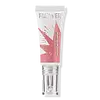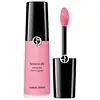What's inside
What's inside
 Key Ingredients
Key Ingredients

 Benefits
Benefits

 Concerns
Concerns

 Ingredients Side-by-side
Ingredients Side-by-side

Water
Skin ConditioningCyclopentasiloxane
EmollientDimethicone
EmollientButylene Glycol
HumectantSynthetic Wax
AbrasiveCetyl PEG/PPG-10/1 Dimethicone
EmulsifyingBehenyl Dimethicone
Skin ConditioningIsododecane
EmollientDisteardimonium Hectorite
StabilisingTrimethylsiloxysilicate
EmollientPhenoxyethanol
PreservativeDimethiconol
EmollientSodium Dehydroacetate
PreservativeRicinus Communis Seed Oil
MaskingDisodium EDTA
Tropolone
Skin ConditioningCI 15850
Cosmetic ColorantTitanium Dioxide
Cosmetic ColorantCI 19140
Cosmetic ColorantBlue 1 Lake
Cosmetic ColorantIron Oxides
Water, Cyclopentasiloxane, Dimethicone, Butylene Glycol, Synthetic Wax, Cetyl PEG/PPG-10/1 Dimethicone, Behenyl Dimethicone, Isododecane, Disteardimonium Hectorite, Trimethylsiloxysilicate, Phenoxyethanol, Dimethiconol, Sodium Dehydroacetate, Ricinus Communis Seed Oil, Disodium EDTA, Tropolone, CI 15850, Titanium Dioxide, CI 19140, Blue 1 Lake, Iron Oxides
Water
Skin ConditioningDimethicone
EmollientIsododecane
EmollientButylene Glycol
HumectantAlcohol Denat.
AntimicrobialAcrylates/Polytrimethylsiloxymethacrylate Copolymer
Skin ConditioningCetyl PEG/PPG-10/1 Dimethicone
EmulsifyingTrimethyl Pentaphenyl Trisiloxane
EmollientDisteardimonium Hectorite
StabilisingPolyglyceryl-4 Isostearate
EmulsifyingMagnesium Sulfate
Phenoxyethanol
PreservativeSynthetic Fluorphlogopite
Propylene Carbonate
SolventPEG/PPG-18/18 Dimethicone
EmulsifyingLauroyl Lysine
Skin ConditioningDisodium Stearoyl Glutamate
CleansingAluminum Hydroxide
EmollientPentaerythrityl Tetra-Di-T-Butyl Hydroxyhydrocinnamate
AntioxidantTocopherol
AntioxidantMica
Cosmetic ColorantCI 77891
Cosmetic ColorantCI 77491
Cosmetic ColorantCI 77492
Cosmetic ColorantCI 77499
Cosmetic ColorantCI 15850
Cosmetic ColorantCI 15985
Cosmetic ColorantFish Oil
Skin ConditioningCeramide AP
Skin ConditioningWater, Dimethicone, Isododecane, Butylene Glycol, Alcohol Denat., Acrylates/Polytrimethylsiloxymethacrylate Copolymer, Cetyl PEG/PPG-10/1 Dimethicone, Trimethyl Pentaphenyl Trisiloxane, Disteardimonium Hectorite, Polyglyceryl-4 Isostearate, Magnesium Sulfate, Phenoxyethanol, Synthetic Fluorphlogopite, Propylene Carbonate, PEG/PPG-18/18 Dimethicone, Lauroyl Lysine, Disodium Stearoyl Glutamate, Aluminum Hydroxide, Pentaerythrityl Tetra-Di-T-Butyl Hydroxyhydrocinnamate, Tocopherol, Mica, CI 77891, CI 77491, CI 77492, CI 77499, CI 15850, CI 15985, Fish Oil, Ceramide AP
Ingredients Explained
These ingredients are found in both products.
Ingredients higher up in an ingredient list are typically present in a larger amount.
Butylene Glycol (or BG) is used within cosmetic products for a few different reasons:
Overall, Butylene Glycol is a safe and well-rounded ingredient that works well with other ingredients.
Though this ingredient works well with most skin types, some people with sensitive skin may experience a reaction such as allergic rashes, closed comedones, or itchiness.
Learn more about Butylene GlycolThis ingredient is a high molecular weight silicone. It has emulsifying and skin conditioning properties.
Ci 15850 is the pigment color red. It is an azo dye and created synthetically.
Azo dyes need to be thoroughly purified before use. This allows them to be more stable and longer-lasting.
This ingredient is common in foundations, lipsticks, and blushes. This color is described as brown/orangey red.
It has many secondary names such as Red 6 and Red 7. According to a manufacturer, Red 6 usually contains aluminum.
Learn more about CI 15850Dimethicone is a type of synthetic silicone created from natural materials such as quartz.
What it does:
Dimethicone comes in different viscosities:
Depending on the viscosity, dimethicone has different properties.
Ingredients lists don't always show which type is used, so we recommend reaching out to the brand if you have questions about the viscosity.
This ingredient is unlikely to cause irritation because it does not get absorbed into skin. However, people with silicone allergies should be careful about using this ingredient.
Note: Dimethicone may contribute to pilling. This is because it is not oil or water soluble, so pilling may occur when layered with products. When mixed with heavy oils in a formula, the outcome is also quite greasy.
Learn more about DimethiconeDisteardimonium Hectorite comes from the clay mineral named hectorite. It is used to add thickness to a product.
It can also help stabilize a product by helping to disperse other ingredients.
Hectorite is a rare, white clay mineral.
Learn more about Disteardimonium HectoriteIsododecane is a fragrance, emollient, and solvent.
As an emollient, it helps your skin stay soft and hydrated. Emollients help trap moisture into your skin.
Isododecane's role as a solvent makes it a great texture enhancer. It spreads smoothly on skin and does not leave a sticky feeling behind. Isododecane also helps prevent color transfer in makeup products.
Isododecane is not absorbed into skin.
Learn more about IsododecanePhenoxyethanol is a preservative that has germicide, antimicrobial, and aromatic properties. Studies show that phenoxyethanol can prevent microbial growth. By itself, it has a scent that is similar to that of a rose.
It's often used in formulations along with Caprylyl Glycol to preserve the shelf life of products.
Water. It's the most common cosmetic ingredient of all. You'll usually see it at the top of ingredient lists, meaning that it makes up the largest part of the product.
So why is it so popular? Water most often acts as a solvent - this means that it helps dissolve other ingredients into the formulation.
You'll also recognize water as that liquid we all need to stay alive. If you see this, drink a glass of water. Stay hydrated!
Learn more about Water